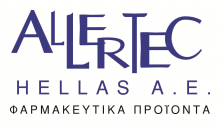The Take-A-Breath Project
The project “Take-A-Breath” aims to design, research and development of an innovative system of personalized monitoring services for respiratory diseases (COPD, asthma) that takes into account cutting-edge clinical research and the emergence of new bio-indicators, with innovative Information and Communication Technologies (ICT), such as gamification techniques. Specifically, it enables the guidance of patients to manage their own health, by providing user-friendly tools and applications to raise awareness to patients regarding the clinical implications of their status and to monitor their adherence to treatment and medication plan. In particular, the work focuses on clinical research of new biomarkers associated with respiratory diseases, by examining a wide range of behavioral, environmental, and psychosocial parameters. In addition, the project adopts and develops an ambitious and innovative approach to monitor the use of inhaled respiratory medicine, combined with training procedures, through a holistic approach to self-management, medical assistance and self-improvement. On this basis, a bio-surveillance network with capacity to adapt to any drug inhalation device will be developed using non-intrusive sensors. Moreover, an ICT system will be developed capable of:
- collecting a wide range of respiratory data that are crucial for patients’ health evolution
- training patients for the proper use of the inhaler devices, through innovative methods based on signal processing and computational vision, along with augmented reality techniques and gamification mechanisms, as well as through the integration of virtual characters and interactive narratives
- providing guidelines and advice to the patient when required, by using a communication and decision-making support system through appropriate interventions (receiving medical assis-tance, self-management of exacerbations).
The effects of Take-A-Breath
Chronic respiratory problems such as Asthma and Chronic Obstructive Pulmonary Disease (COPD) are considered to be one of the greatest health problems of the modern age. In order to understand the magnitude of the problem, it is worth mentioning that COPD is the fourth greater cause of death in the United States, and is about to climb to the third place over the next four to five years. In Greece, statistics also show that 8.5% of the population suffers from COPD, while more than 300 million cases of asthma worldwide are reported, including 250,000 deaths since 2011.
The benefits of the project will be important for the following categories of users and stakeholders:
- Patients to whom it will propose strategies that will reduce the risk of exacerbations through the online platform and mobile application.
- Relatives and friends of the patients who they will be informed in a timely and valid way of the risks and incidents that may trigger exacerbations.
- Physicians and clinicians who can continuously monitor disease progress and recognize correlations between different ways of using inhaled drugs and exacerbations.
- Companies (pharmaceutical and inhaler manufacturers) by providing tools to help them make better use of their potential and significantly improve their services and products.
The expected results of the project will bring both economic and social benefits to society by improving the quality of life of patients, considerably reducing exacerbations, and informing clinicians and pharmaceutical companies about the correlations between symptoms, environmental conditions and drugs by offering tools which will improve services and products. In particular, the results include the following implementations:
- Intelligent Device for Proper Use of Drug Inhalation via Wireless Sensor Network.
- Intelligent Self-Management Platform and Personalized Guidance.
- Clinical Monitoring and Medical Support System
EPAnEK
"Competitiveness"
"Entrepreneurship"
"Innovation"










